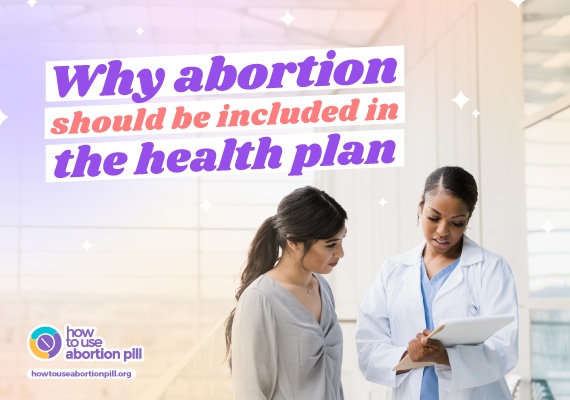A health plan: An individual or group plan that provides, or pays the cost of, medical care (as defined in section 2791(a)(2) of the Public Health Service Act, 42 U.S.C. 300gg-91(a)(2)). Many workplaces have health plans for their employees and these employers determine what can be on these health plans. Unfortunately, majority health plans are exclusive of abortion coverage − individual health plans inclusive.
The coverage of abortions on a business’ or individual’s health plan is majorly dependent on which state the business or individual is located in. Federal law prohibits federal funds, including Marketplace premium tax credits, from being used for abortion services except in the limited cases of rape, incest, or if a woman suffers from a life-threatening physical injury or illness that would place the woman in danger of death unless an abortion is performed. Half of the states have banned non-Hyde abortion coverage for health plans sold in the exchange/marketplace, and some of those states even restrict coverage for abortions that result from rape or incest or would endanger the mother’s life.
Firstly, it is imperative that abortions be included in the health plan because it would help curb the disturbing number of unsafe abortions recorded yearly. Presently, 25 million unsafe abortions take place annually, resulting in approximately 47,000 deaths every year. This is more prevalent primarily in developing countries and among members of socioeconomically disadvantaged and marginalised populations. Because of the expensive nature of the cost of terminating pregnancies, abortions should be included in the health plan. Many women from economically challenged countries, resort to either homemade concoctions to terminate pregnancies or visit quack doctors who have no idea what they are doing. This does not only result in deaths but also a lifetime of health complications that come with unsafe abortions. If women can have abortions safely without the financial strain, this number would more than likely reduce significantly.
Again, the failure to establish access to financial help for safe abortions is another way of taking away an individual’s institutionally protected rights and freedom. A health plan that includes the coverage of an abortion to lessen the financial constraints it might come with should be within rights. The possibility of an unplanned pregnancy, pregnancy as a result of rape, incest or an unsafe pregnancy should be always considered in a women’s health. For example, in the case of an ectopic pregnancy or when a woman suffers from hypertension and kidney anomalies, should it be financially burdening for a family to choose to save a mother instead of possibly losing both mother and child? Just as a health plan can include the coverage of dental bills, it should cater for the bills of abortions which on its own is already sensitive and mentally and physically tough for a woman.
Abortion is essential health care and must be taken out of the realm of politics. The right to access safe abortion services must be codified in law in accordance with human rights standards that require ensuring the availability, accessibility, affordability, acceptability and quality of abortion services. A health plan is not complete if it neglects the coverage of a delicate process such as an abortion. It is necessary that women be able to have safe and easy abortions without breaking their banks or being worried about the financial strain. It will save many from having to result to cheaper harmful abortion methods.
